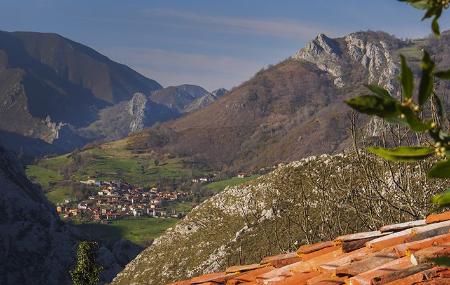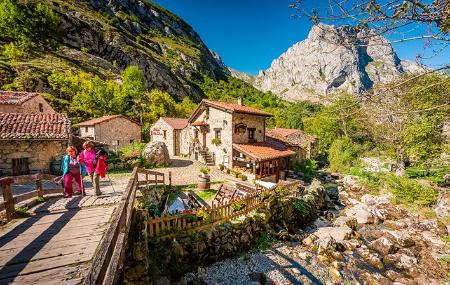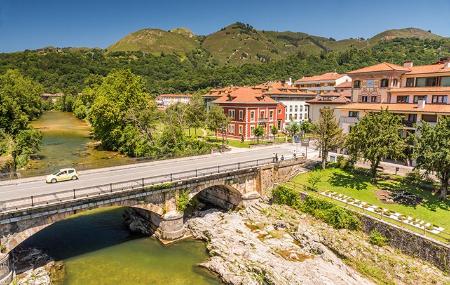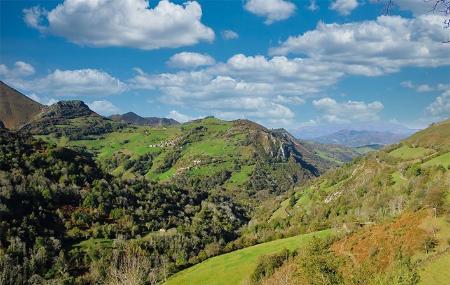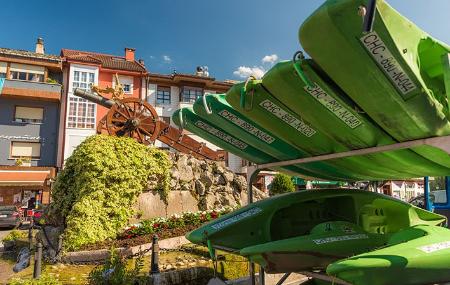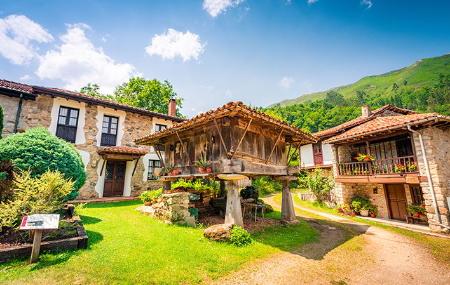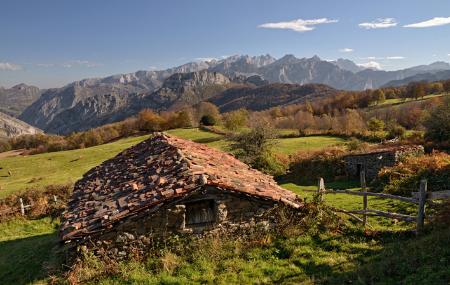If we already mentioned the appearance of the Picos de Europa where the councils of Peñamellera Alta and Peñamellera Baja meet, it is even more impressive once we reach Cabrales, and this will be the case all along this journey back to the eastern centre of Asturias, through Onís, Cangas de Onís and Amieva. The Picos de Europa National Park is the main show. On the Central Massif are the highest peaks of the Cantabrian mountain ranges, with the Urrieles, with the Picu Urriellu, which is what the locals in Cabrales call it, although others refer to it as the Naranjo de Bulnes, 2,519 metres high.
Cabrales is known worldwide for mountain climbing, but it is also popular with those that enjoy gentle hiking, and it is also famous together with the Peñamellera Alta Council, where the Cabrales cheese is made, with its protected denomination of origin. It has unique little villages such as Camarmeña, Tielve, Sotres, Berodia, Inguanzo, Carreña, Asiego… and various viewpoints to admire the Urriellu Peak, including the one in Pozo de la Oración, or the Pedro Udaondo viewpoint, to name but a few, as well as many routes, the most popular of which are those that climb up to Bulnes and the Cares trail. But there are plenty more.
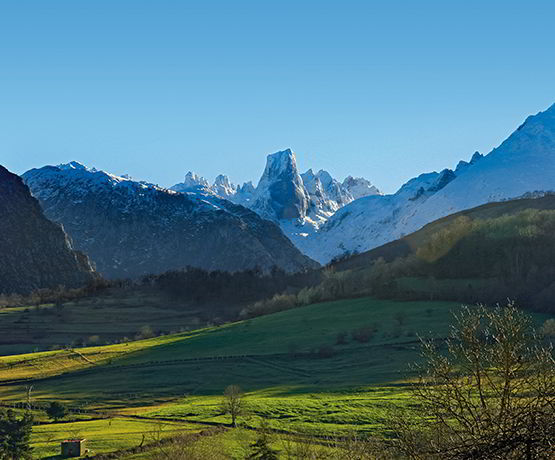
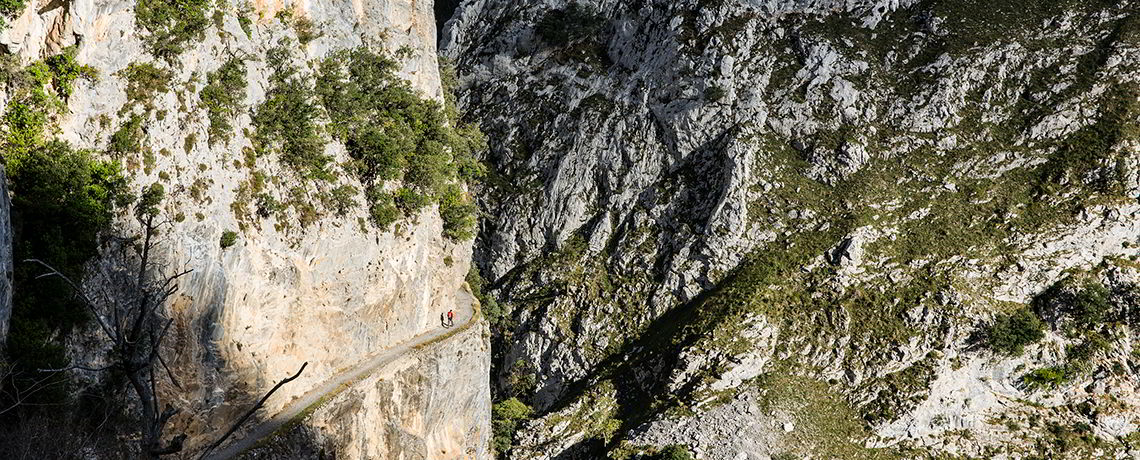
And if Cabrales and Peñamellera Alta are where the Cabrales cheese is made, Onís and Cangas de Onís are where the equally famous cheese, Gamonéu, is made.
Onís is located in the heart of the Eastern Massif of the Picos de Europa, with Benia as its capital. Some of its villages to be discovered include Demués, Gamonéu, which actually falls within the councils of Onís and Cangas de Onís, and other places such as Remís, Sirviella, Castru, Avín or Villar. All travellers should visit a Gamonéu cheese factory in the valley, a variety that is produced all year round, while the seasonal and artisan variety made up in the mountain passes, is only made during the summer months.

Once in Cangas de Onís, the tourism centre in this area, its capital, Cangues d'Onís/Cangas de Onís, is a hive of comings and goings of travellers looking, not just for souvenirs for their loved ones, but also to take that mandatory photograph next to the medieval bridge, with its old Roman road, and with the Victoria Cross hanging from it, representing Asturias and all the Asturian people.
Cangues d'Onís/Cangas de Onís is, without doubt, a truly culturally-rich town.
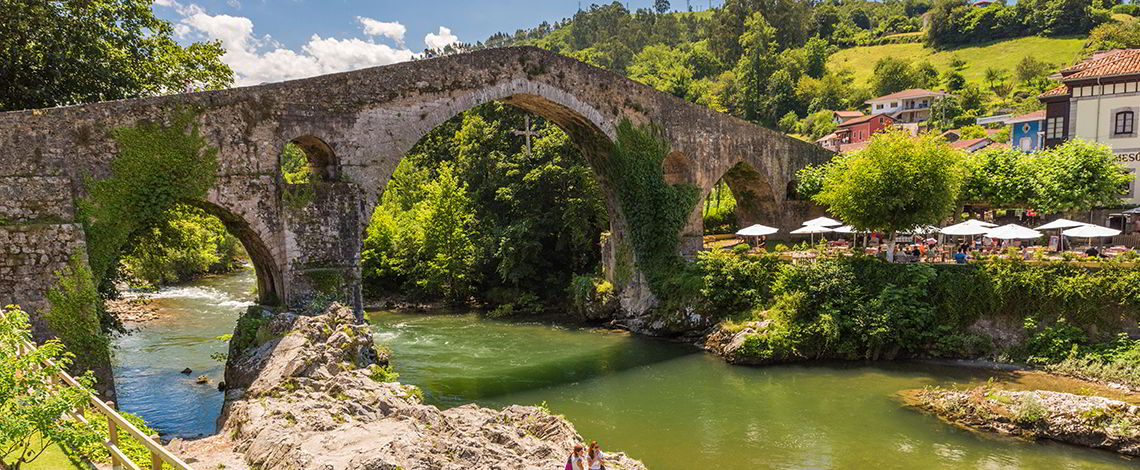
To name just a few, some must-see sites are the Buxu Cave, the Santa Cruz and Abamia Dolmens. The Cuadonga/Covadonga Sanctuary, also located within the council should be visited, the Santa María la Real Basilica, of course the Santina, the Virgin of Cuadonga/Covadonga, patron of all Asturians, in the Holy Cave and, without doubt, also the lakes and the entire natural area forming part of the Picos de Europa National Park, with its overwhelming beauty.
Nature's treasures can also be enjoyed in the nearby councils of Amieva and Ponga. Amieva is located in the high valley of the Sella River. Its oldest construction is Santa María de Mián. It has a number of interesting mansions, together with extremely photographic bridges, such as the Graznos Bridge, at the entrance to the imposing Beyos gorge./p>
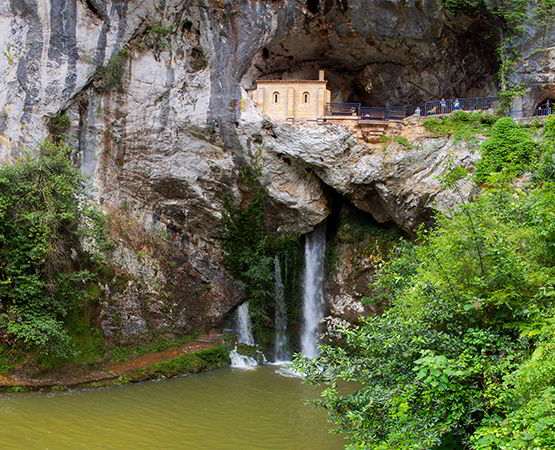
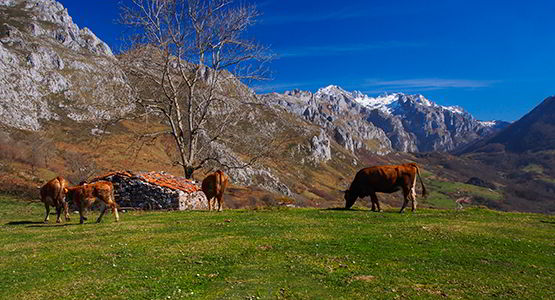
And of course, here, as in Ponga, the famous Beyos cheese is made.
One of its attractive and simple routes is the Beyu Pen, and of course, the Jocica Route. Sames, Vis and Carbés are some of the attractive villages, as well as the impressive Angón Valley.
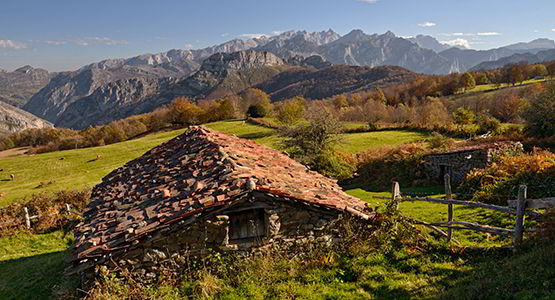
And if Amieva is a pretty village, the same can be said of Ponga. Its Nature Park is first-class. The capital, San Xuan/San Juan de Beleño, invites visitors to explore its streets, together with villages such as Tarañes, Sobrefoz, Sellañu, Viegu, Abiegos, Valle Moru (abandoned village) Tanda, Vibuli or Cazu. The beautiful Ventaniella mountain pass, and the equally beautiful Peloño forest, together with the road which, after passing Viegu, descends down to the Beyos gorge to discover the village of El Beyu perched up on the hill. The Interpretation Centre of Ponga Nature Park is worth a visit, located at the exit from San Xuan/ San Juan de Beleño.
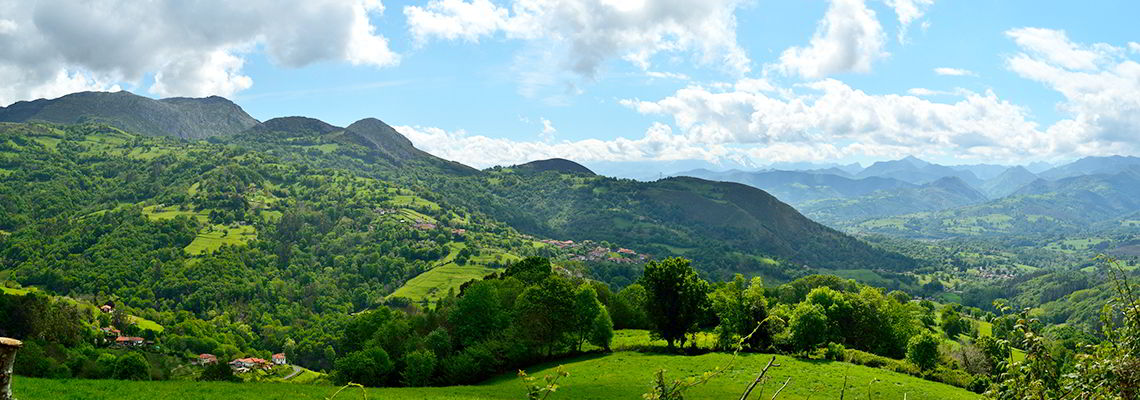
This journey ends in the East in Piloña and Parres. The capital of Piloña is L'Infiestu.
Thinking about Piloña is like thinking about the Foces del Infierno Route, the Virgen de la Cueva Sanctuary, the Sidrón Cave, the kingdom of hazelnuts, the hórreos and paneras in the village of Espinaréu and the well-preserved traditional architecture in the neighbourhood of Valledal in Villamayor.
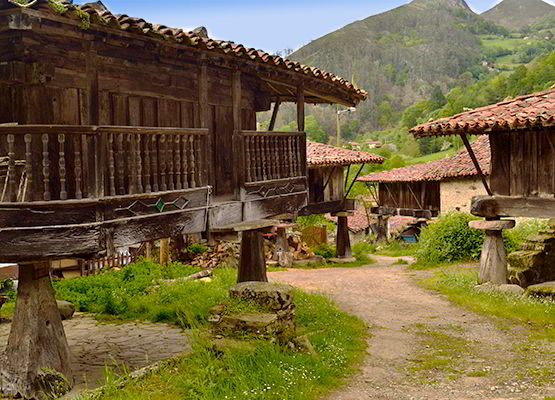
Among the quaint villages is Anayo, which, once again, offers spectacular views of the Picos de Europa. Cerecea, San Román, Valles, Valle, El Texedal and Santianes are others. And from Piloña, to the council of Parres, with its capital Arriondas/Les Arriondes, famous for being the starting point each year for canoeist in the International Descent of the River Sella, the emblematic river in Asturias, to end in Ribadesella/ Ribeseya. What is known as the "Fiesta de les Piragües" (Pirogues festival) was founded in 1930 by Dionisio de la Huerta, Manés Fernández and Alonso Argüelles. Among its most famous routes are the climb up to the Picu Pienzu, which people normally begin at La Cruz de Llames or from the Fitu, and the climb up to La Mota Cetín. Picturesque villages include Arenes, Llames and Vallubil.


